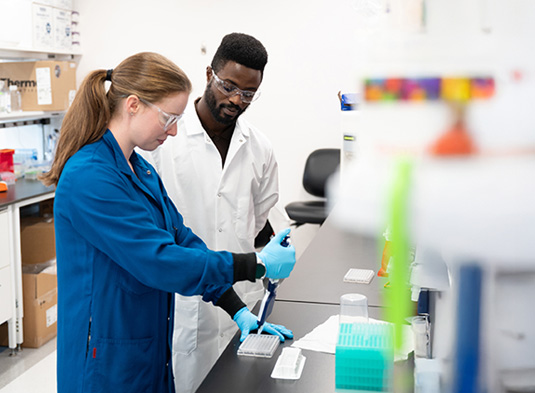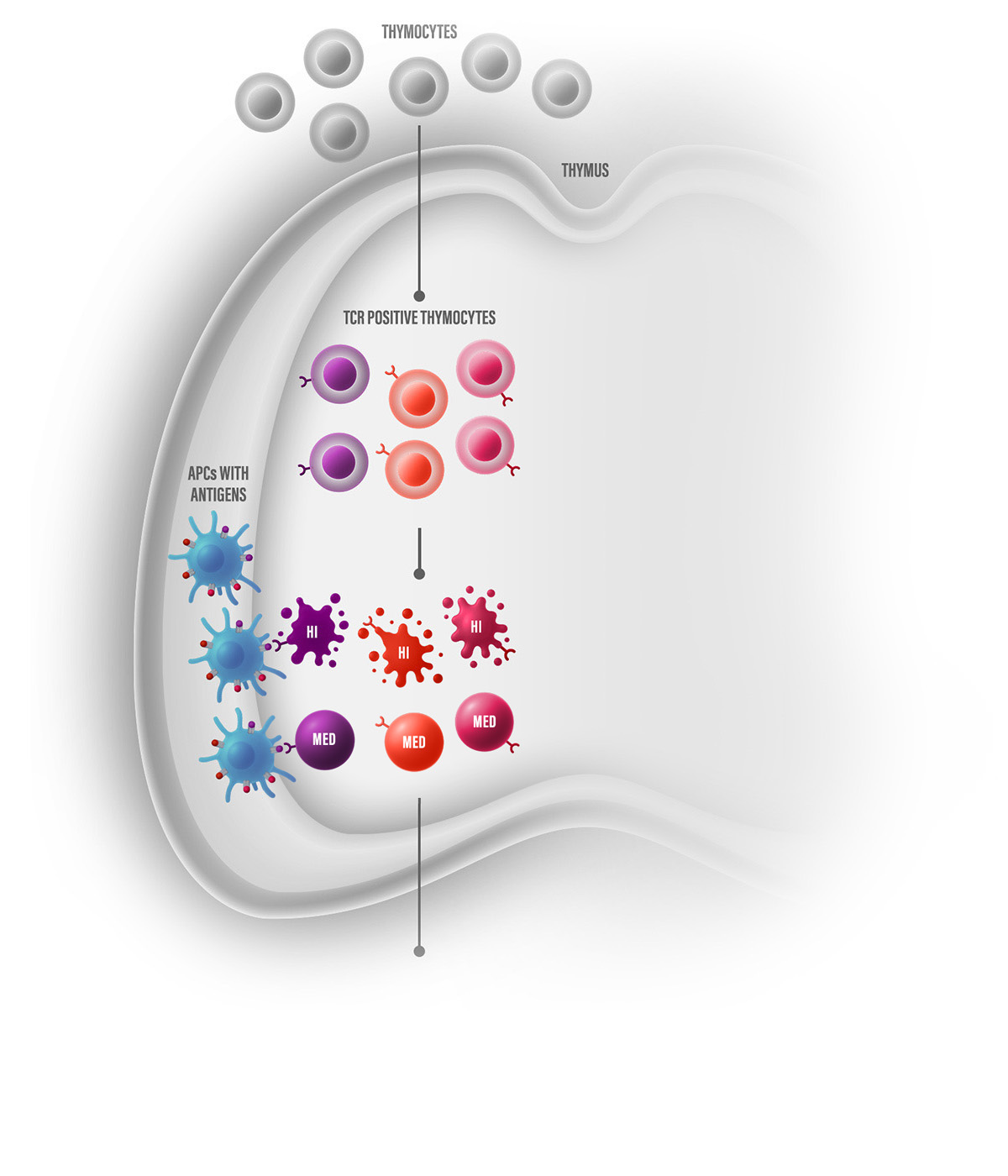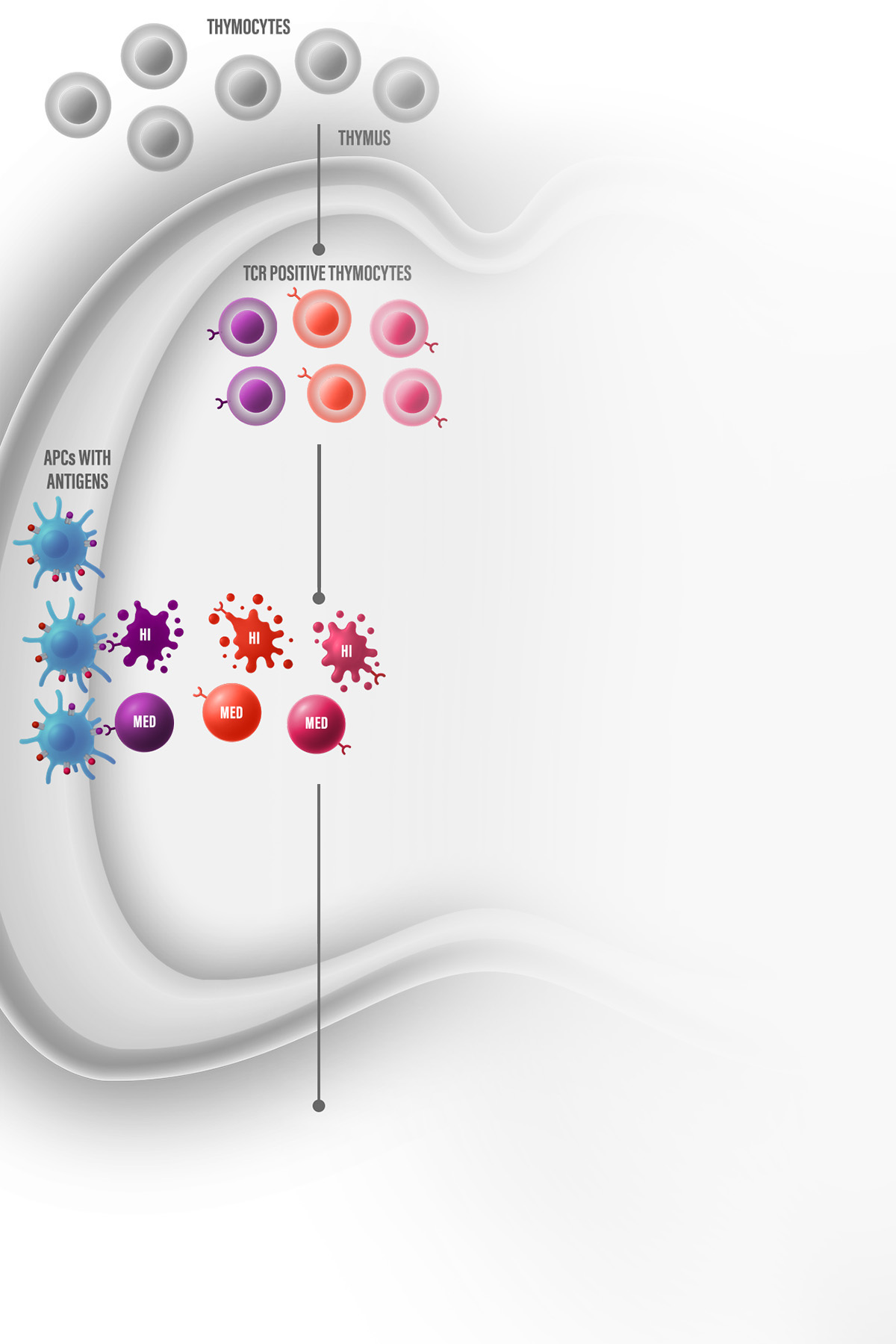THE SCIENCE of the Thymus
Central role in preventing autoimmunity

The thymus is the training ground of the immune system.
The thymus, located just above the heart, is where T cells learn to distinguish self from non-self. Within this organ, autoantigens representing nearly all peripheral proteins and tissues are presented to developing thymocytes in a process that leads to the elimination of autoreactive T cells and the generation of tolerogenic regulatory T cells (Tregs). Thymus-derived Tregs home to specific tissues where they exert broad anti-inflammatory effects and promote tissue repair.
Harnessing the natural process of central tolerance


1 Enter
Each immature thymocyte enters the thymus from the bone marrow and undergoes gene rearrangement to generate unique T cell receptors (TCRs), each of which is capable of recognizing and binding to any one of a billion different antigens.
2 Teach
Antigen-presenting cells (APCs) display self-antigens that engage TCRs on developing T cells. High-affinity recognition between a self-antigen and TCR promotes deletion of potentially autoreactive T cells. Medium (MED) affinity recognition promotes differentiation into tolerogenic Tregs that recognize and protect tissues bearing self-antigens.
3 home & tolerize
Mature thymic Tregs home to peripheral tissues that express their specific self-antigen, take up residence, and exert broad anti-inflammatory effects, promoting tolerance and preventing autoimmunity.


autoimmune disease state
What goes wrong in autoimmunity

Too few tolerogenic Tregs at the tissue leading to autoimmune response

zag bio solution
Thymus-targeted drugs to restore balance.

Drug action:
Zag Bio therapy targets peripheral antigen to thymic APCs



